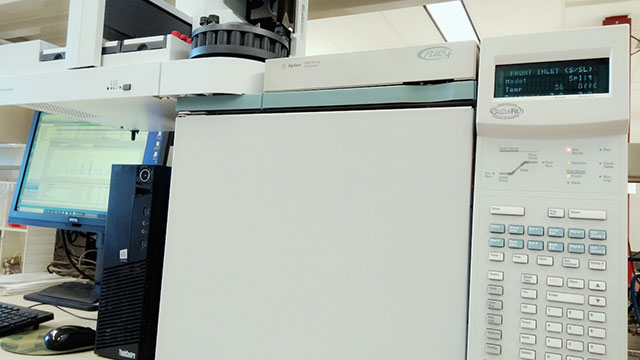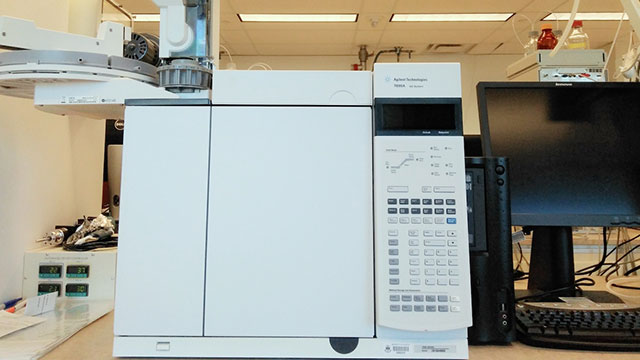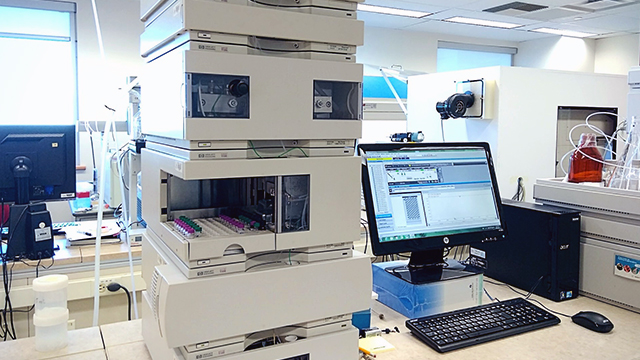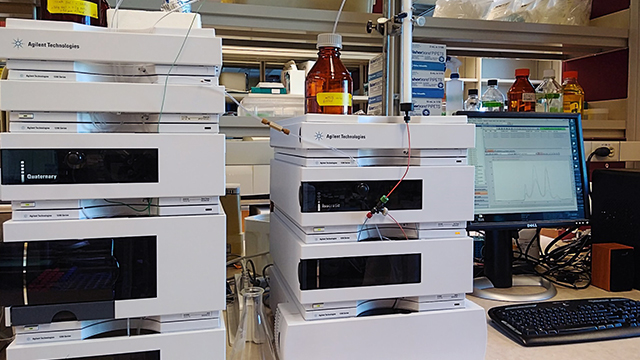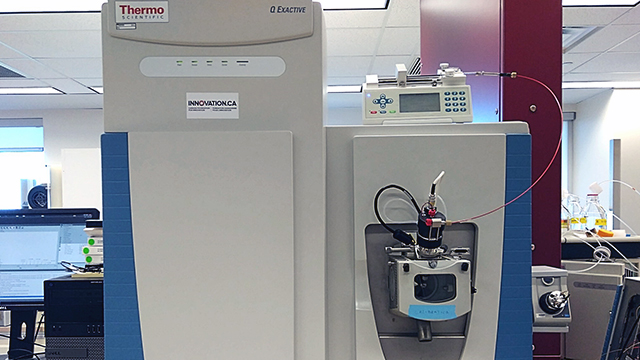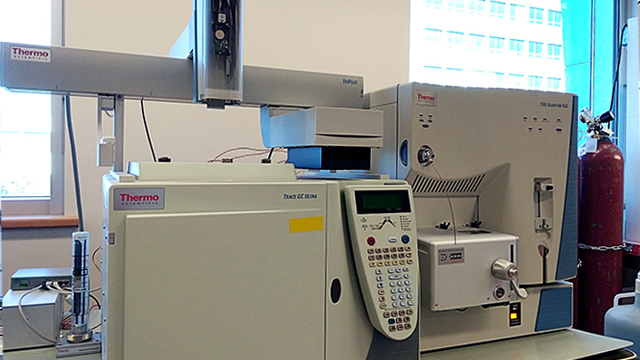Agilent 1100 HPLC System #1
This High Performance Liquid Chromatography (HPLC) instrument is equipped with a quaternary (4-channel) pump, thermostatted autosampler and column compartment, Evaporative Light Scattering Detector (ELSD), and Charged Aerosol Detector (CAD). These detectors are capable of quantifying molecules that lack chromophores or other characteristics necessary for standard ultraviolet and visible wavelength detectors. It is used primarily for separation and quantification of lipid classes, but is versatile enough to be used in other HPLC methods.
Agilent 1100 HPLC System #2
This instrument is equipped with a binary (2-channel) pump, autosampler, thermostatted column compartment, and Diode Array Detector (DAD). DADs are useful when looking at the absorbance spectrum of compounds of interest, often in order to determine optimal wavelengths for quantification. Currently this HPLC is used for measurement of fat-soluble micronutrients like coenzyme Q10 and vitamin K, as well as isothiocyanates and glucosinolates. It has also been used to analyze proteins and peptides.
Agilent 1200 HPLC System
This system is unique in that it has a quaternary pump plus an additional isocratic pump that is used to introduce post-column reagents. Compounds can be first separated, then induced to react with an agent that changes their properties to make them detectable in the Multi-Wavelength Detector (MWD). This HPLC also has a thermostatted autosampler and column compartment. It is used primarily for low-pressure Fast Protein Liquid Chromatography (FPLC) lipoprotein profiling and for HPLC measurement of inositol phosphates including phytate. Like the other HPLCs, it is versatile and useful for other methods as well.
Agilent 6890 GC System
This Gas Chromatography (GC) instrument separates compounds in the gas phase using very long capillary columns. It has a Flame Ionization Detector, a very robust and reliable detector used to measure a variety of carbon-containing compounds. It has an autosampler as well and is used here mainly for measurement of fatty acids, lipid classes, and fatty alcohols. It is available for measurement of other compounds as needed.
Agilent 7890A GC System
Like the Agilent 6890, this Gas Chromatography (GC) instrument separates compounds in the gas phase using very long capillary columns. It has a Flame Ionization Detector (FID), a very robust and reliable detector used to measure a variety of carbon-containing compounds. It has an autosampler as well and can also be used for measurement of fatty acids, lipid classes, and fatty alcohols. As our second GC-FID instrument, it is available for new method development.
Thermo Q Exactive Orbitrap Mass Spectrometer
This is a high-resolution, accurate mass spectrometer with state-of-the-art Orbitrap mass detector. Separation is done either by Ultra High Performance Liquid Chromatography (UPLC) or by nano-HPLC prior to injection into the mass analyzer. Alternatively, some research groups use mass spectrometers like this for "shotgun" analysis of all compounds present, with no prior HPLC separation. The Q Exactive is available for lipidomic and other LC-MS/MS analysis on a case-by-case basis.
Thermo TSQ Triple-Quadrupole Mass Spectrometer with Thermo Trace Ultra GC
The Thermo TSQ is a lower-resolution mass spectrometer (shared with
Alberta Proteomics and Mass Spectrometry Facility). It is coupled to a Thermo Trace GC for GC-MS methods. Researchers use GC-MS to identify compounds that cannot be identified by retention time and comparison with standards. The GC autosampler is currently awaiting repair, and is temporarily unavailable.
Other Equipment
The Core facility is equipped with bench space, equipment, and supplies for trainees to perform sample prep here in the lab, under expert supervision. If users are not comfortable preparing samples themselves, they are encouraged to come do it here at no cost.
